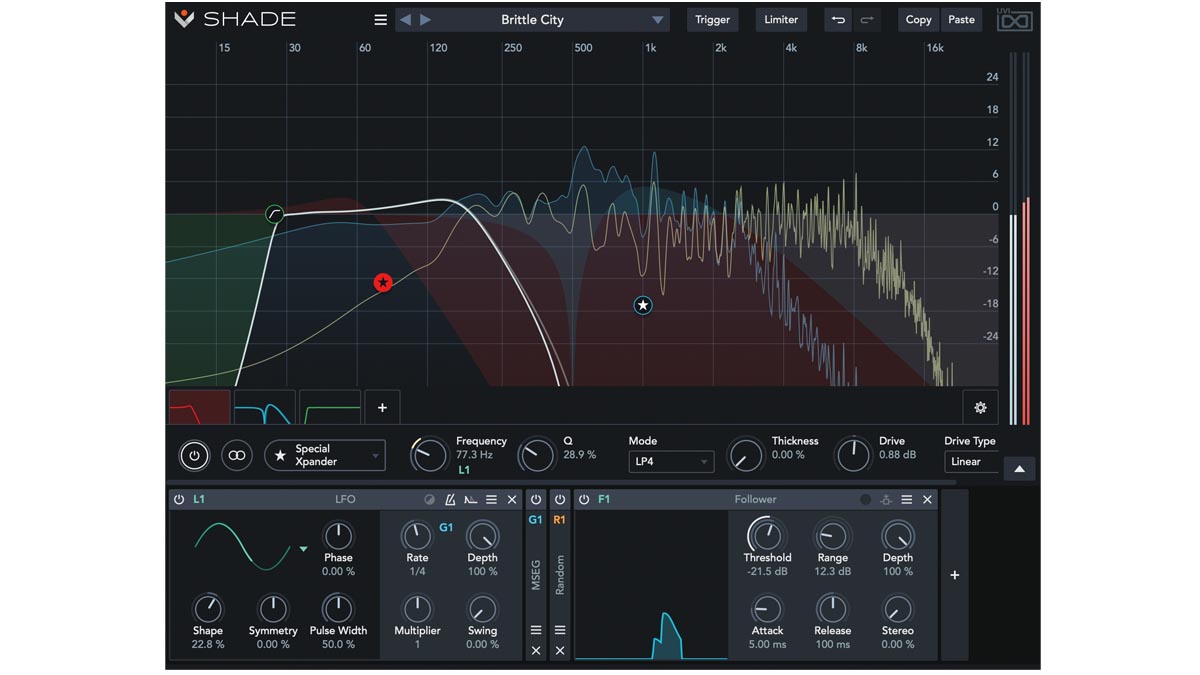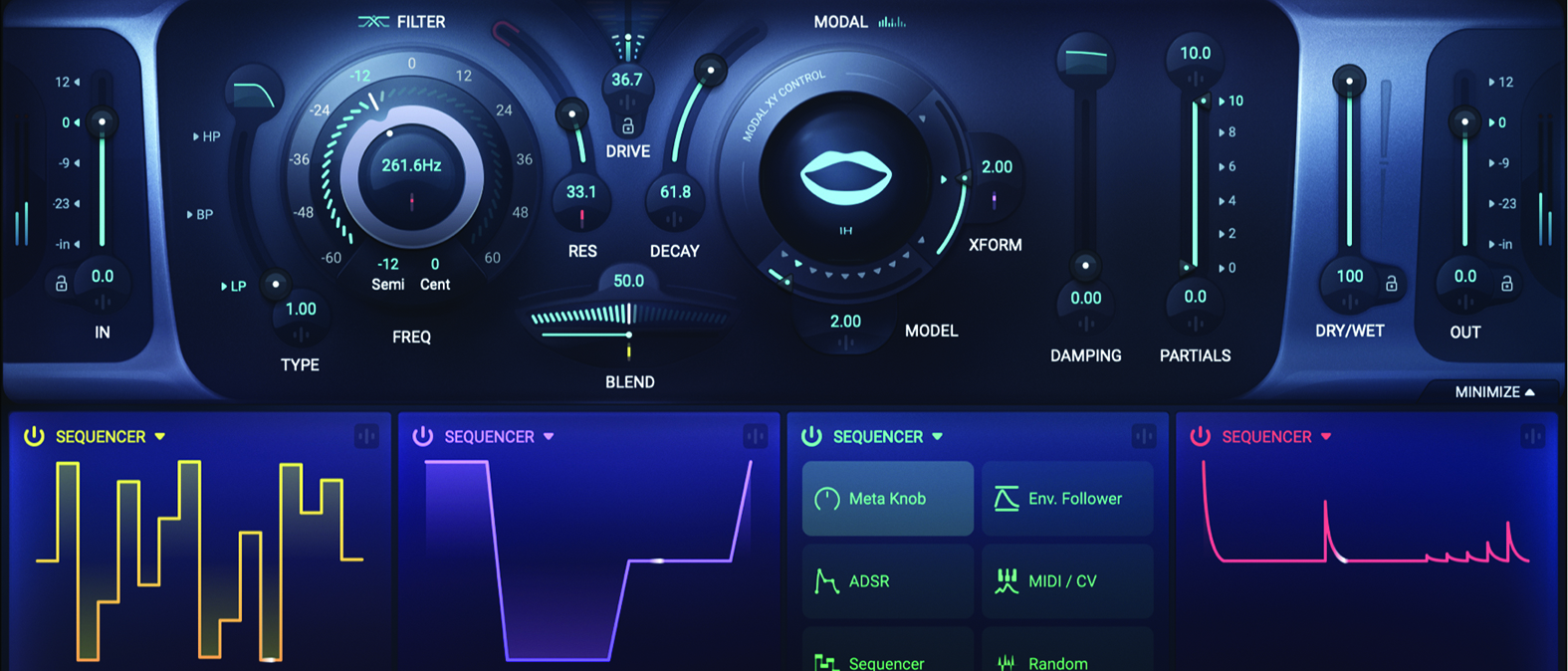MusicRadar Verdict
Supermodal is everything a good creative effect should be: inspiring, deep, not too complex or gimmicky. In short: amazing.
Pros
- +
Great animated interface.
- +
Deep sound design tool.
- +
Fabulous modulation options both inspire and surprise.
- +
Impressive filter models…
- +
…and presets!
Cons
- -
Nothing negative to report, it’s fantastic.
MusicRadar's got your back
Polyverse Supermodal: What is it?
Filters have come a long way. We recall interviewing some of the early drum & bass producers (so early it was then called jungle) and they used hushed tones when talking about their use of these filters, sometimes not even admitting that they were behind those liquid beats and basslines.
Now filters are used for just about everything: from precision EQing to tension-building risers, bassline mangling to crazy vocal effects. There are straight filters that do one job well, and multi-effect filters that do everything in as crazy a way as possible. Or there’s Polyverse’s Supermodal which mostly stands alone and could be the most inspiring filter you’ve ever used.
Polyverse Supermodal: Performance and verdict
Things start off in a fairly straightforward manner with the left-hand dial of the two main controls on Supermodal’s UI. This one is a straight filter that can be switched between low pass, high pass and band pass. You can make swirly noises and it sounds great – all good so far.

• UVI Shade
A creative filter that has powerful dynamic effects via a range of different filters and modulation.
• Soundtoys FilterFreak 2
It’s been around for years but has a unique character and sound which makes it a firm producer favourite.
But the Modal filter to its right is where the main action is, and here you can switch between modelled filters. Each of these uses complex algorithms essentially comprising of hundreds of different filters that, according to Polyverse, “produce resonating modes in an acoustic model”. Some of the models are fairly simple like a square wave, and others are based on ‘real’ things like the Bell and Piano models and introduce those types of sounds into the filter characteristic. Others are more complex and unreal, like the band limited noise filter, and there are also some vocal-type formant models.
There are other familiar controls and features, including input and output levels, a Wet/Dry slider and Blend control to mix between the two filters. There’s a Resonance slider for the first filter and a Decay option for the Modal filter with similar properties. Then you get other more custom options. Damping effectively reduces higher frequencies while the Partials slider acts like a band limiter in that you can choose what part of the filter’s effect range you want to use. There’s also a Drive option that pushes both filter inputs plus Xform that blends between filter transformations.
Super modulation
Supermodal’s extensive modulation section – similar to that used in other Polyverse plugins like the Manipulator vocal effect – really gives the plugin its edge. Here you get up to four sections where you can choose from six main modulation sources including sequencer/LFO, Meta Knob, envelopes, Random or external MIDI/CV. Once you choose a source, a very cool Supermodal feature adds a small Modulation Pop-up Button to any main parameter that can be a destination so you can easily apply, say, a sequencer pattern to a variety of destinations.
Of the main sources, we’re particularly smitten by this Sequencer which lets you easily select rate, shapes or patterns for any source and really does create complex and dynamic sequences, all kept in time should you wish. We also like the Random option which is very flexible, with rhythm and pitch options plus a depth control so you can really go off road. Some great modulation options overall!
Want all the hottest music and gear news, reviews, deals, features and more, direct to your inbox? Sign up here.
Modal results
So, while Supermodal prides itself on its 27 filter types – and these do take it well beyond what most other filters offer – it’s really their combination with the modulation section that impresses us the most. The results can be heard most obviously through the very wide-ranging set of well over 200 presets which are categorised by their effect (Subtle, Dirty, and we love this: ‘Artsy’) or simply ‘Drums’.
What we love most is that a rhythmic element keeps many of the presets inspiring and ‘in check’
There’s a bit of everything here from the deepest, dubbiest, most swirling delays, to melancholic reverberated note sequences, all from a simple input source. What we love most is that a rhythmic element keeps many of the presets inspiring (you’ll want to create entire basslines, breaks and leads with the results) but also kind of ‘in check’ so that everything falls well within usable parameters.
Indeed Supermodal has taken us by surprise with its more classy results which somehow manage to be usable and not too gimmicky – a big issue with some of the more creative filters out there. That combination of filter algorithms and modulation options is a perfect and easily manipulatable marriage and takes Supermodal to another level where few others have reached. It really is a case of playing a couple of notes or beats through this beast, and creating entire tracks from them. You might not know where you’re going, and there will be twists and turns, but what a creative journey you’ll have.
MusicRadar verdict: Supermodal is everything a good creative effect should be: inspiring, deep, not too complex or gimmicky. In short: amazing.
Polyverse Supermodal: Hands-on demos
Polyverse Music
Dash Glitch
Polyverse Supermodal: Specifications
- macOS OSX 10.12+ 64-bit.
- Windows 64-bit.
- Supports VST2 / VST3 / AU / AAX plug-in formats.
- CONTACT: Polyverse
- BUY FROM: Plugin Boutique
Andy has been writing about music production and technology for 30 years having started out on Music Technology magazine back in 1992. He has edited the magazines Future Music, Keyboard Review, MusicTech and Computer Music, which he helped launch back in 1998. He owns way too many synthesizers.

